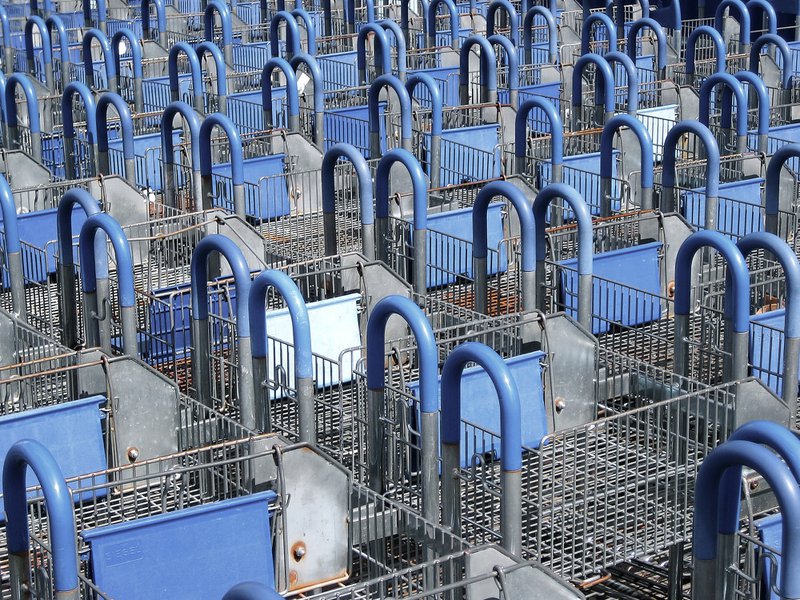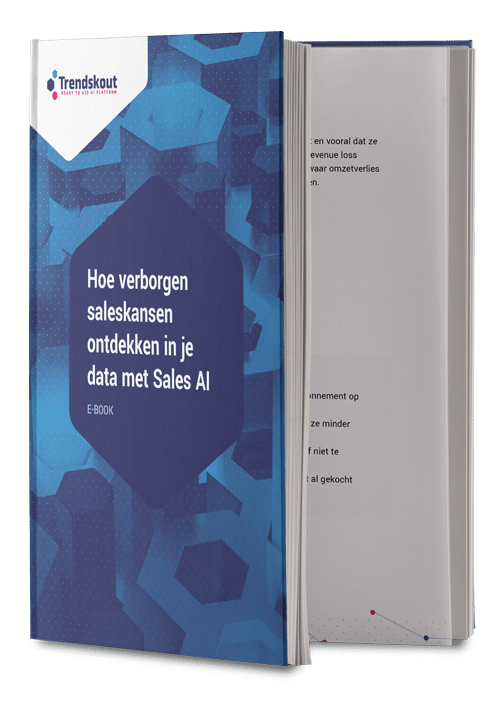How can you dramatically improve margins in the wholesale and distribution industry with Predictive Sales Software? That is the key question in response to a new type of customer behaviour and a constant need for greater efficiency.

New customer behaviour and innovative technologies are impacting wholesale and distribution companies worldwide. Manufacturers looking for greater efficiency and customers wanting omni-channel experiences at the lowest price demands, push companies to their limits.
These relatively new disruptive forces, partly made possible by new technologies, mean considerable pressure on margins.
Industrial distribution plays a crucial role as a sales channel. It is the backbone of the supply chain and the knowledge centre for products. Companies can use this do not reliably fulfil crucial roles with thin margins. As customers and manufacturers go through consolidation and direct sales gaining power and strength, the meagre profits for the intermediaries are a tough nut to crack.
In addition to the challenges above, this is a difficult time for the sector. Profits have lagged behind the entire industrial sector for 15 years. We also see the same geographical effect, where Germany and Europe lag behind the US and Asia.
It is no surprise that many wholesalers and distributors are struggling to fight back in an increasingly digital world. Customers and retailers are using online wholesale marketplaces to purchase from manufacturers, completely sidelining the distributor. Improvements in the B2B e-commerce experience are also making customers more inclined to buy online. And these expansion of choice makes it harder to win their loyalty.
The changing world of industrial distribution is all about innovation.
There is much more innovation than most managers think in distribution. Although wholesalers have traditionally acted as the main channel for market access to manufacturers and keep their products in stock, they have only survived by constantly innovating.
Distributors deliver and secure sales volumes and help meet the diverse needs of a widespread and fragmented customer base. They can only do this with the latest technology.
Deeper customer relationships and sustainable competitive advantages
Although competition is getting tougher and margins are shrinking, there are opportunities in the wholesale trade. And in several sectors. According to a recent study by global management consultant McKinsey & Company the fastest industrial distributors will create deeper customer relationships and sustainable competitive advantages.
These are the main reasons why a handful of industry leaders are seeing market share and margins grow. McKinsey analysed the 15-year performance of more than 130 industrial distributors, with combined annual sales of $500 billion. The most demanding sectors, electronics, metals and building products, have an ROIC (Return On Invested Capital) close to zero.
Now let us look at the bright spots. The distributors that will do well in the coming years will be selective scaling up and investment in technology to keep pace with competitors, manufacturers and customers.
In summary, how can a successful industrial distributor dramatically improve its margins using predictive sales software? By improving its key value drivers through technology: price, retention and cross-selling.
The best industrial distributors intelligently optimise pricing.
If you are in B2B distribution, you already know that small price increases can have a remarkable effect on your profits. Ceteris paribus, selectively pricing better is the most effective profit driver in wholesale.
One cannot wake up one morning and raise prices across the board. Industrial distributors are usually tied to contract customers and manufacturers. The only way to improve pricing is to design and implement price differentiation strategies.
One of the most effective ways of implementing a successful pricing strategy is usually setting the right prices for each customer transaction. This method is particularly suitable for sporadic buyers. The problem with sporadic buyers is that you cannot quickly know what prices they are willing to accept. A Predictive Sales Software that can predict prices and fluctuations about thousands of customers and products is advantageous in this case.
A dynamic pricing tool provides salespeople with customised pricing recommendations for each customer
Price recommendations take into account characteristics such as product type, seasonality, customer segment and supplier - some of the most important features that explain margin and pricing. Inside sales staff can easily compare pricing strategies and regularly implement the distributor's pricing policy.
The most successful industrial distributors reduce customer fluctuations
Reducing customer fluctuation can have a huge impact on profitability. Experience shows that even the most successful B2B distributors usually operate with an annual turnover of 15 to 20%. In a typical low-margin business, determining and reducing customer turnover can result in a seven-figure improvement in profits.
The cancellation rate is not only a symptom of the underlying challenges of the industry. It can also be a possible indicator of customer dissatisfaction or better marketing by your competitors.
That is why it makes a lot of sense for you to concentrate on the customers with the highest churn-risk and selectively prioritise customer retention.
However, since customers have a different propensity to change suppliers and have a different lifetime value, successful distributors know that prioritisation is essential. It only makes sense to invest in customer retention if both the risk and the value of the customer are high enough. Wholesalers serving thousands of medium and small accounts can only detect the risks of failure and reduce the Next Best Actions (NBA) Proposals.
Make use of cross-selling opportunities.
What Bob Dylan sings, "He not busy being born is busy dying", could be translated to the world of industrial distribution: you either grow or you die. Revenue stagnation is a dangerous signal, especially in established markets.

If your share-of-wallet does not grow, your customers will distrust you and your competitors. Your business could quickly become irrelevant. The discovering and exploiting cross-selling opportunities with current products in your portfolio and within your customer base is crucial. It is the cheapest and most effective way to stay relevant and secure the investment you have made in the customer.
Spot opportunities with Predictive Sales Software
With Predictive Sales Software, sales managers can spot various opportunities within their customer base to focus on selling value. For example, a leading electrical wholesaler was able to use artificial intelligence to optimise cross-selling with small accounts.
Smaller accounts are usually irrelevant to quota-driven account managers who are under time pressure, and are therefore often forgotten. The situation changes when a wholesaler, with the help of Predictive Sales Software, provides inside salesmen with a list of products with the highest cross-selling opportunities per account.

